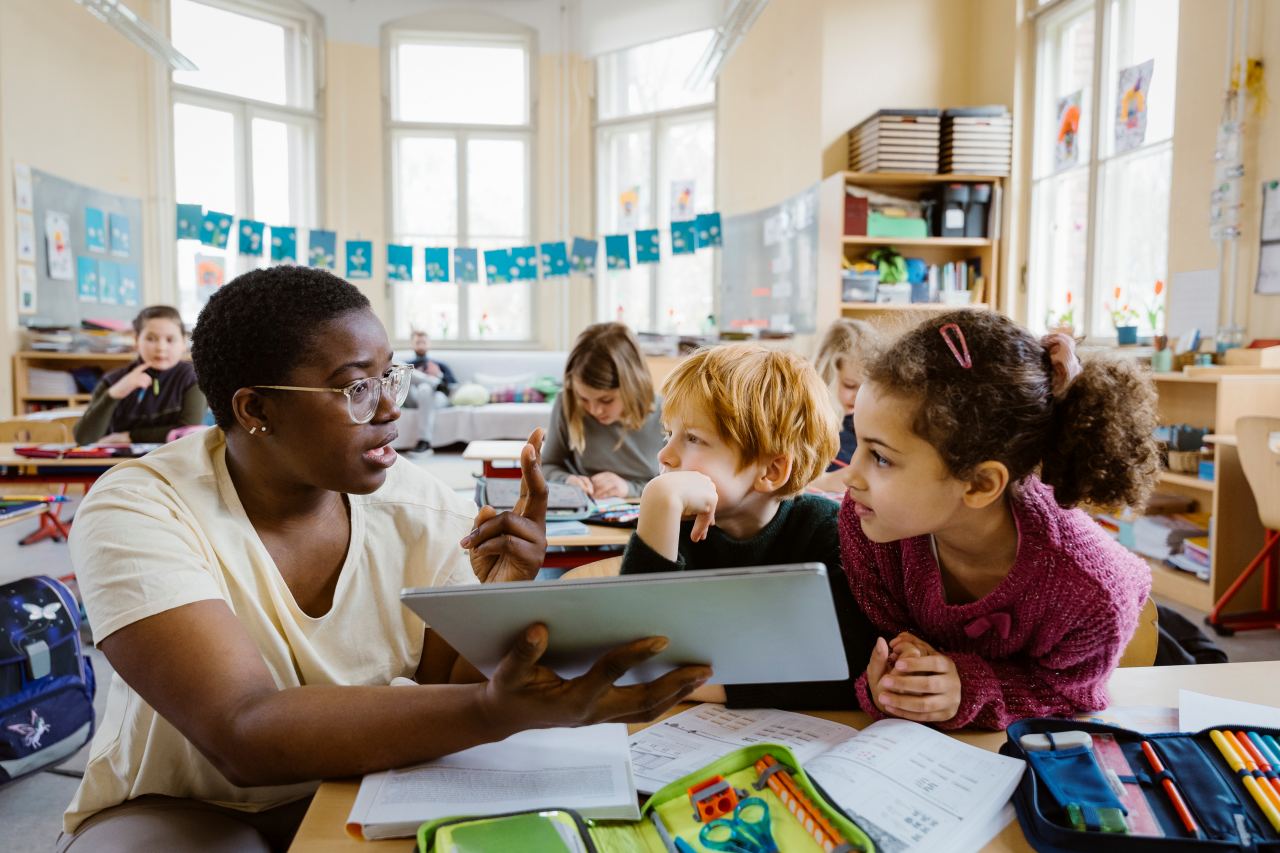The Best Primary Science Tuition Singapore for Effective Learning Methods
A Comprehensive Overview to the Numerous Learning Techniques in Main Scientific Research Instruction
The exploration of varied understanding approaches in key scientific research direction provides an opportunity for educators to boost pupil interaction and comprehension significantly. By analyzing hands-on discovering techniques, inquiry-based methods, and joint strategies, we can identify efficient practices that cater to different finding out styles.

Hands-On Learning Strategies
Hands-on discovering strategies play a crucial role in primary science direction, engaging trainees in active exploration and testing. These techniques permit students to interact directly with phenomena and materials, fostering a deeper understanding of scientific ideas. By utilizing manipulatives, designs, and real-life experiments, teachers produce an atmosphere where trainees can observe, hypothesize, and evaluate their ideas.
Such techniques not only improve comprehension but also cultivate crucial thinking and problem-solving abilities. When pupils take part in tasks like developing straightforward makers, planting seeds, or carrying out chain reactions, they are urged to ask questions and seek answers via their own monitorings. This experiential technique assists to demystify complex scientific concepts, making them a lot more relatable and available.
Additionally, hands-on learning advertises partnership among peers, as pupils usually function in groups to perform experiments or share searchings for. This teamwork not just improves their understanding experience but also creates crucial social skills. Inevitably, incorporating hands-on techniques in key science instruction promotes a lifelong love of discovering and curiosity concerning the natural globe, laying a strong structure for future academic searches in science and past.
Inquiry-Based Knowing
Inquiry-based understanding is a training strategy that motivates pupils to ask questions, explore phenomena, and create their own understanding of clinical concepts. This technique changes the focus from typical teacher-led direction to an extra student-centered experience, where learners take the effort in their instructional journey. By promoting inquisitiveness, inquiry-based knowing advertises much deeper engagement with the product, permitting students to check out subjects in a meaningful context.
In technique, this approach typically entails hands-on experiments, monitorings, and vital reasoning tasks that align carefully with the clinical approach. Trainees are urged to create hypotheses, design examinations, and assess data, which cultivates vital abilities such as logical and analytic reasoning. The role of the teacher in this framework is to promote expedition, guiding students through the inquiry process while urging independent idea and collaboration.
Moreover, inquiry-based knowing nurtures a sense of ownership over the knowing process, inspiring trainees to go after knowledge actively. This technique not only improves understanding of clinical ideas however likewise cultivates a long-lasting love for discovering, outfitting pupils with the abilities needed to browse a significantly intricate globe.
Collaborative Discovering Approaches
Collaborative learning methods empower pupils to take part in meaningful communications with peers, promoting a shared duty for their academic end results. In main science guideline, these techniques encourage students to interact to check out clinical ideas, solve issues, and conduct experiments (primary science tuition Singapore). By getting involved in group tasks, trainees can leverage varied viewpoints, permitting for richer understanding and retention helpful site of scientific expertise
One secret facet of collaborative understanding is the emphasis on communication abilities. Trainees have to verbalize their ideas, listen actively to others, and bargain ideas, all of which are critical proficiencies in both scholastic and real-world contexts. This social communication not only improves their understanding of clinical concepts but likewise advertises teamwork and dispute resolution abilities.
Moreover, collective learning typically brings about increased motivation and interaction. When pupils see the value of their contributions within a group, they are a lot more most likely to take possession of their knowing trip. Teachers can facilitate this procedure by creating organized group tasks that line up with educational program objectives while providing assistance on efficient cooperation methods. On the whole, incorporating collaborative knowing methods in main science instruction cultivates a dynamic learning environment that prepares students for future academic and social challenges.
Innovation Integration in Science
The integration of technology in key scientific research direction enhances finding out experiences by supplying ingenious tools and sources that support various training methods, including collaborative understanding - primary science tuition Singapore. Using digital systems, simulations, and interactive applications enables students to involve deeply with clinical concepts, helping with a more hands-on approach to knowing
Virtual labs, for instance, enable students to conduct experiments securely and effectively, advertising inquiry-based knowing. These devices can replicate real-world scientific scenarios, permitting trainees to envision complicated procedures that would be hard to replicate in a traditional classroom setup. Additionally, modern technology cultivates communication and partnership amongst trainees, as they can share searchings for and interact on tasks through on the internet systems.
Furthermore, multimedia discussions and educational videos can improve lessons by satisfying diverse discovering designs, making abstract principles much more easily accessible. Information evaluation tools also equip pupils to collect and translate clinical information, enhancing crucial believing abilities. On the whole, the strategic consolidation of innovation in main science direction not just improves involvement yet also prepares students for a technologically advanced society, equipping them moved here with vital skills for future scientific ventures.
Set Apart Guideline Approaches
Set apart guideline approaches are crucial for resolving the varied demands of students in main science education. These methods allow teachers to tailor their teaching methods to suit differing capabilities, rate of interests, and discovering styles within the class. By using separated guideline, educators can produce an inclusive environment that fosters involvement and improves understanding of scientific concepts.
One effective approach is to utilize versatile grouping, which enables trainees to collaborate with peers at comparable ability levels or with varying perspectives. This approach motivates peer knowing and advertises important thinking. In addition, using selections in tasks can empower trainees, allowing them to pick projects that reverberate with their interests while still fulfilling curricular objectives.
In addition, integrating tiered assignments is one more beneficial method. By designing jobs with differing levels of intricacy, educators can make sure that all students are properly tested, no matter their efficiency. Utilizing formative analyses to gauge recognizing additional enables instructors to readjust their educational techniques dynamically, ensuring that each learner gets the assistance they need.
Eventually, applying distinguished direction approaches in primary science education and learning not just enhances trainee understanding outcomes but likewise grows an interest for scientific research, preparing students for future academic quests.

Final Thought
In summary, reliable primary over at this website science guideline necessitates a diverse strategy that encompasses hands-on discovering, inquiry-based approaches, and collective strategies. The integration of innovation and set apart instruction additionally caters to varied understanding styles, fostering an atmosphere favorable to expedition and critical thinking.
The exploration of diverse discovering approaches in key science instruction provides an opportunity for educators to enhance trainee interaction and understanding dramatically.Hands-on understanding techniques play a pivotal role in primary science instruction, engaging students in active exploration and testing.Inquiry-based discovering is a training technique that motivates trainees to ask concerns, check out phenomena, and build their own understanding of scientific concepts.Joint understanding strategies encourage trainees to involve in purposeful interactions with peers, promoting a shared responsibility for their instructional end results. Generally, integrating collaborative learning approaches in key scientific research direction cultivates a vibrant learning atmosphere that prepares pupils for future scholastic and social challenges.